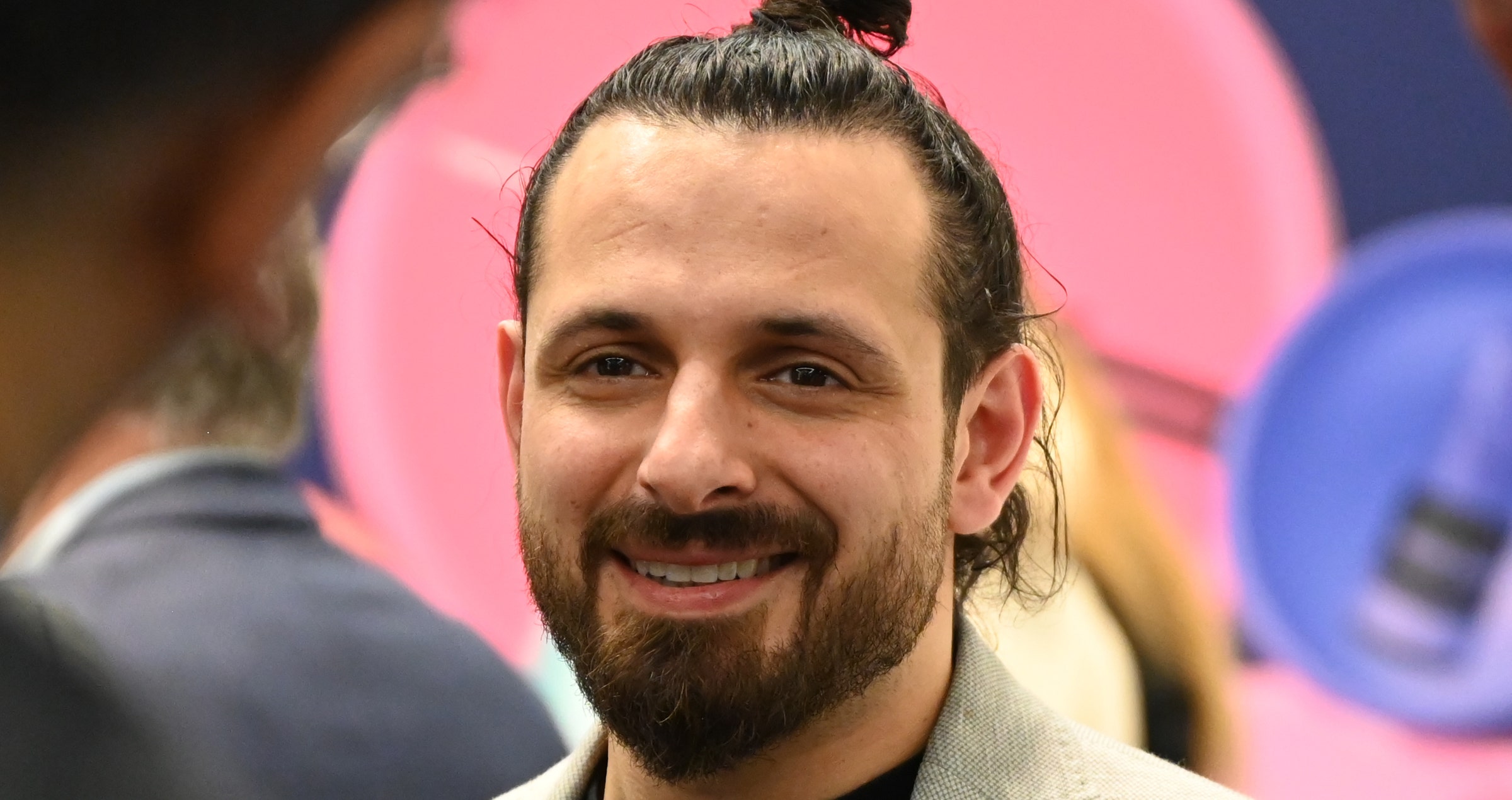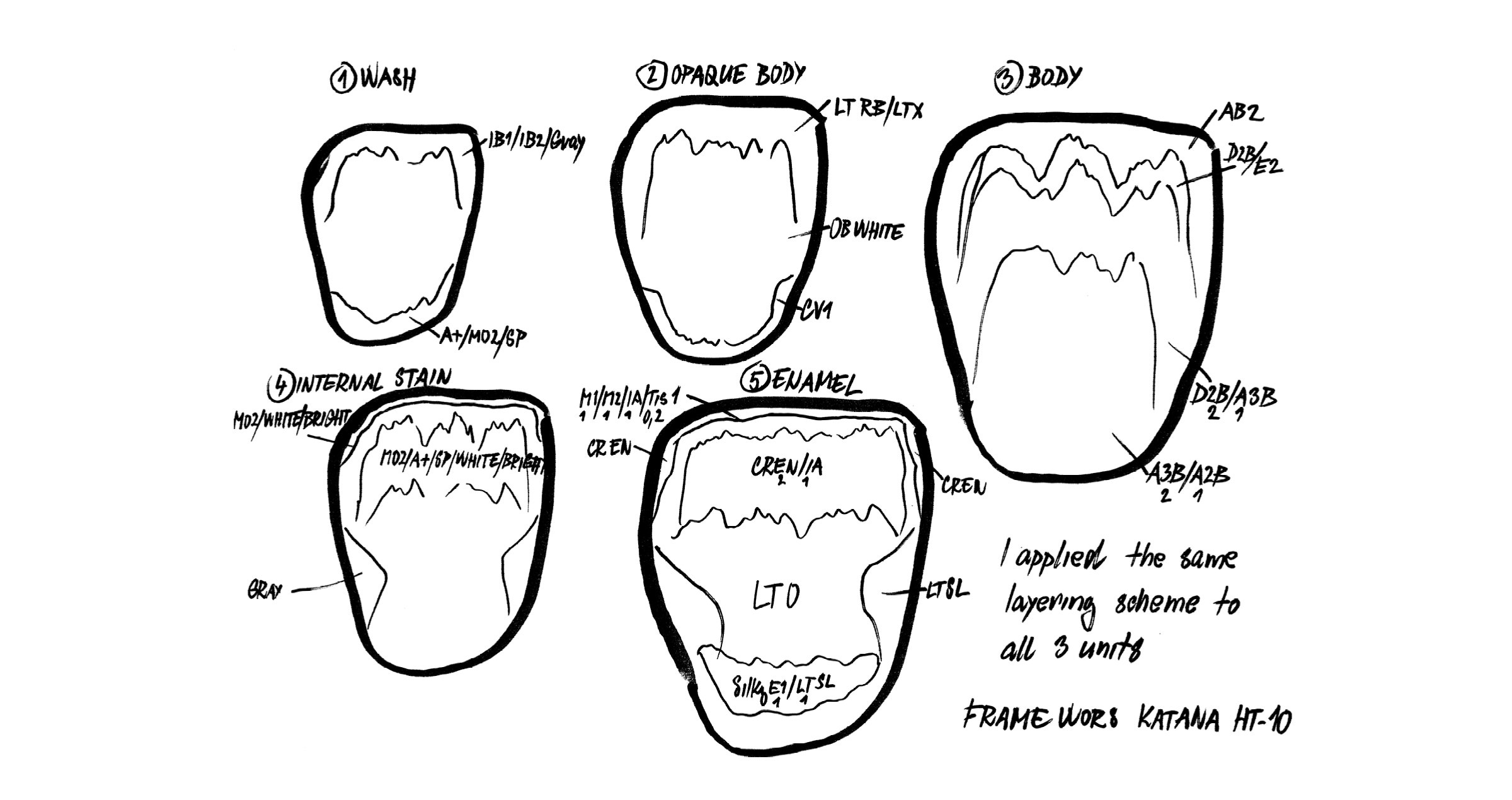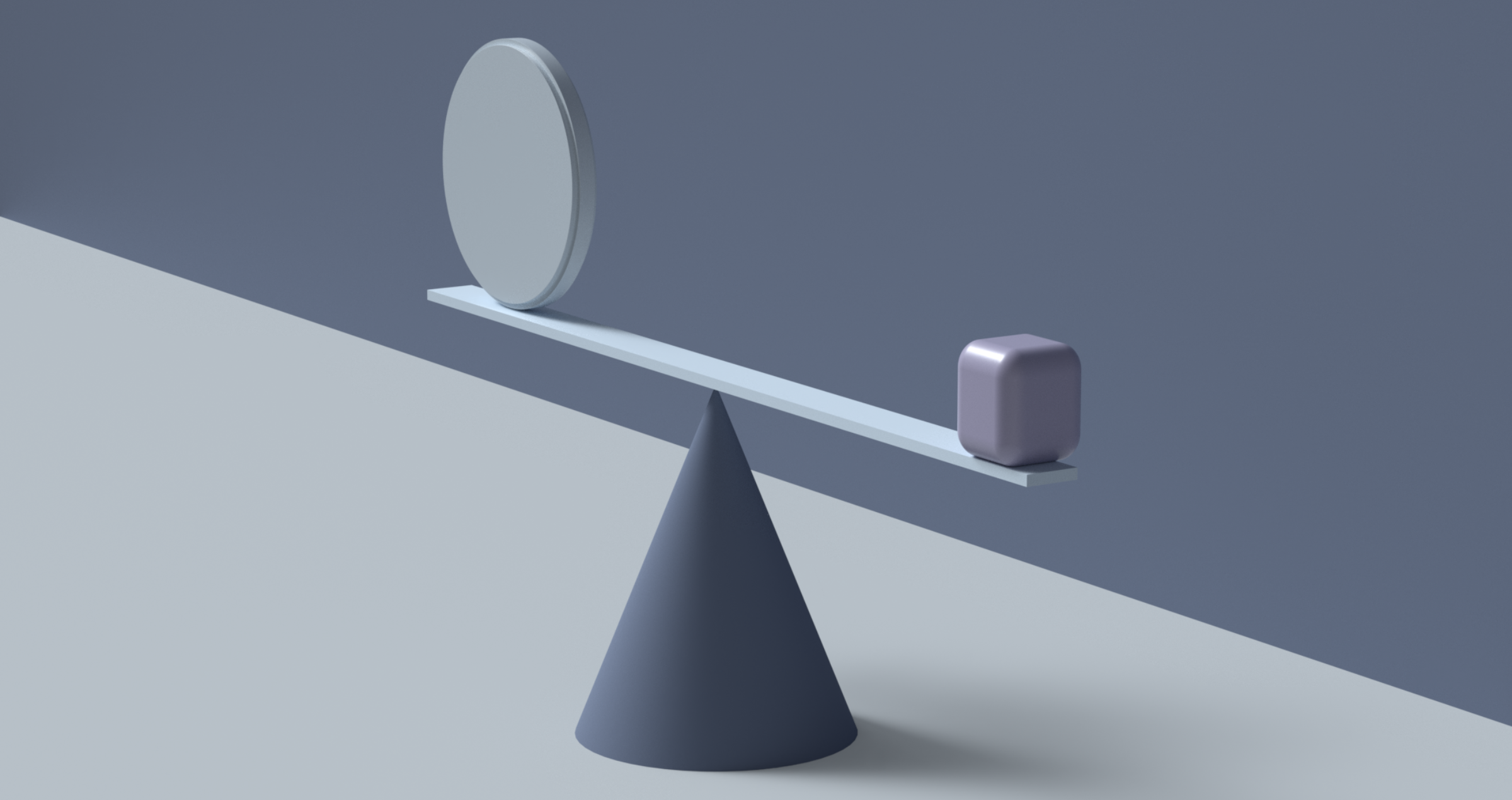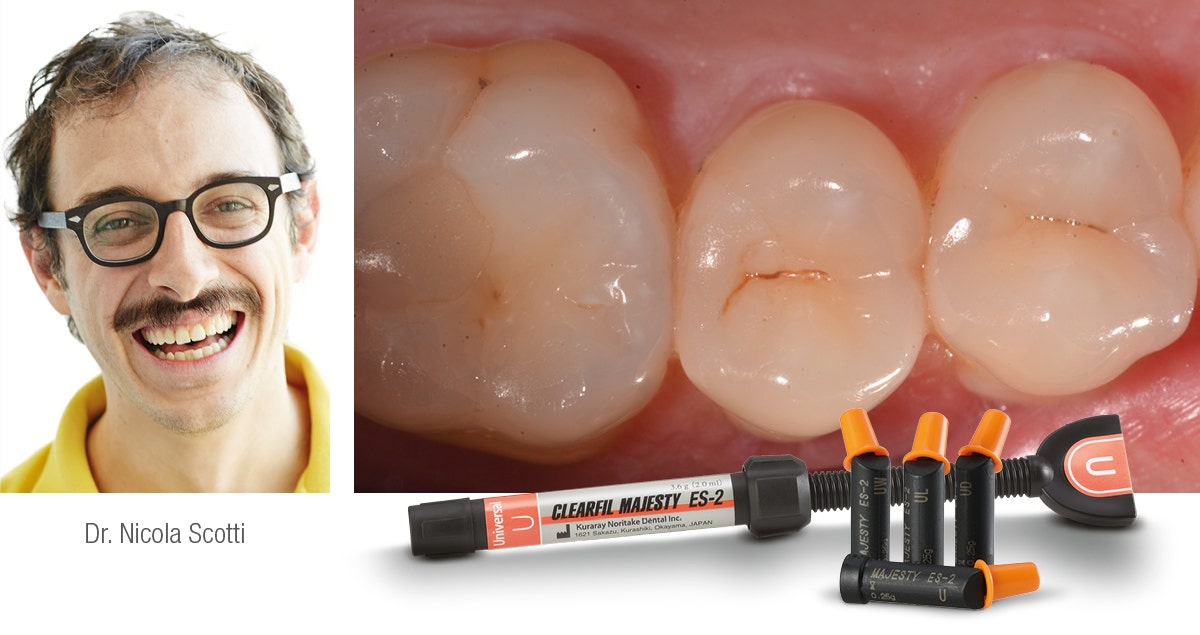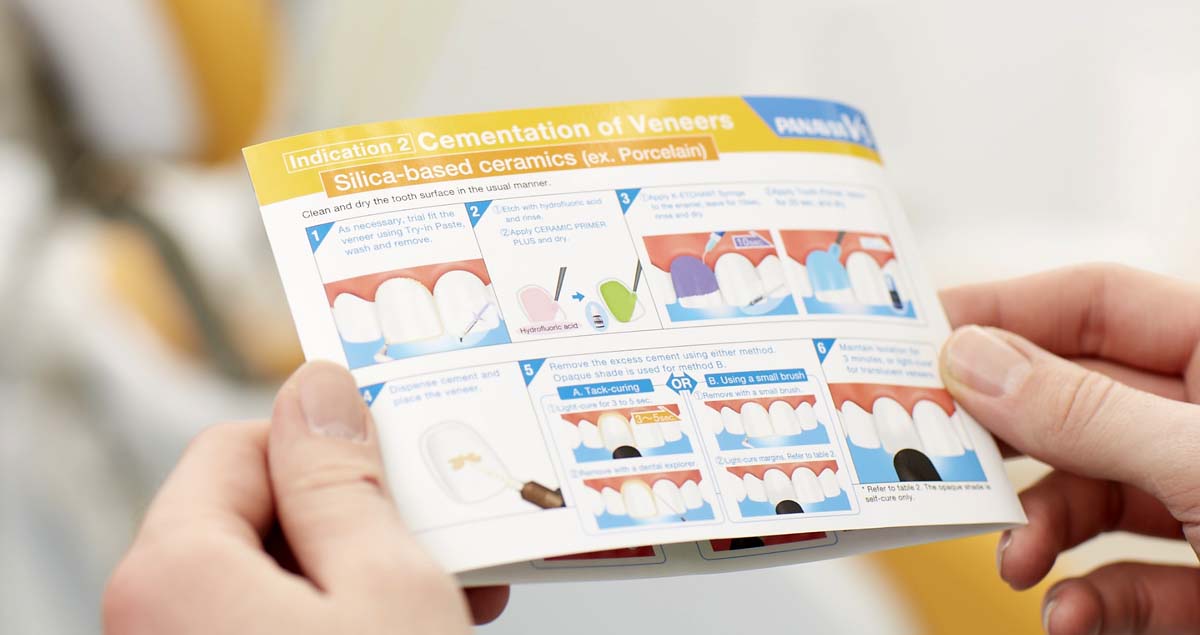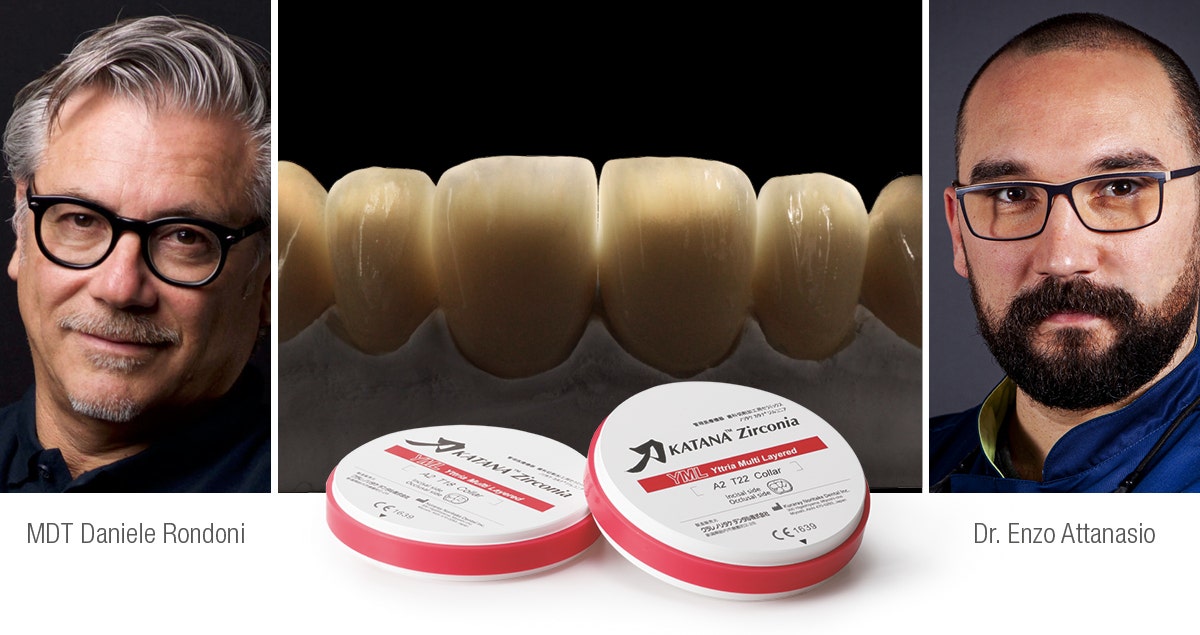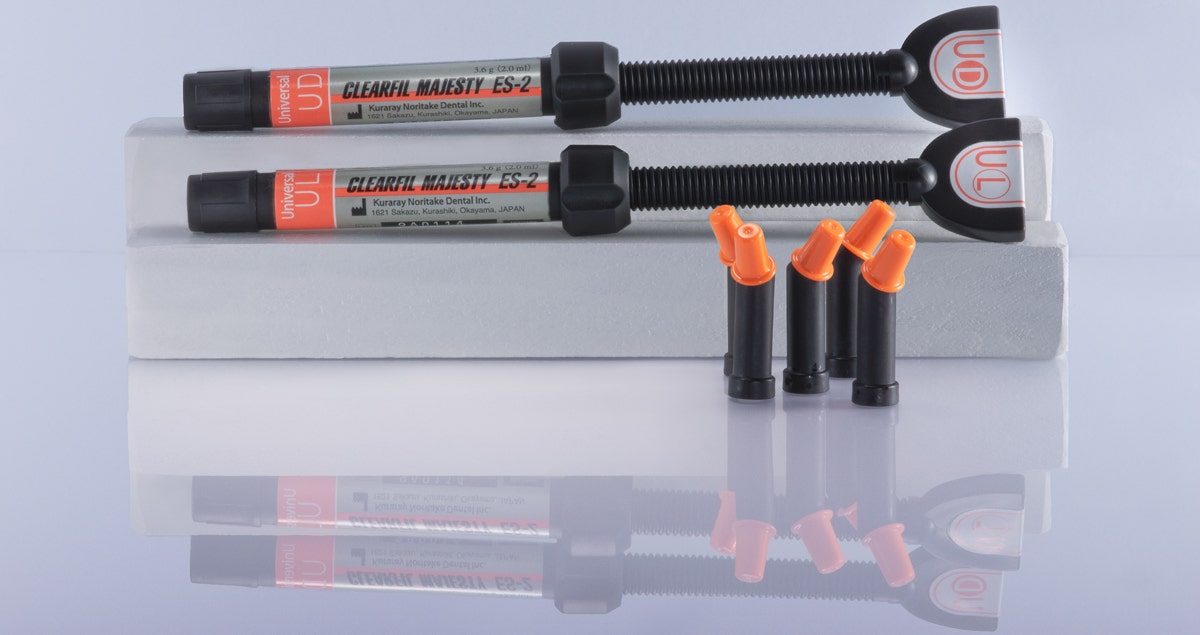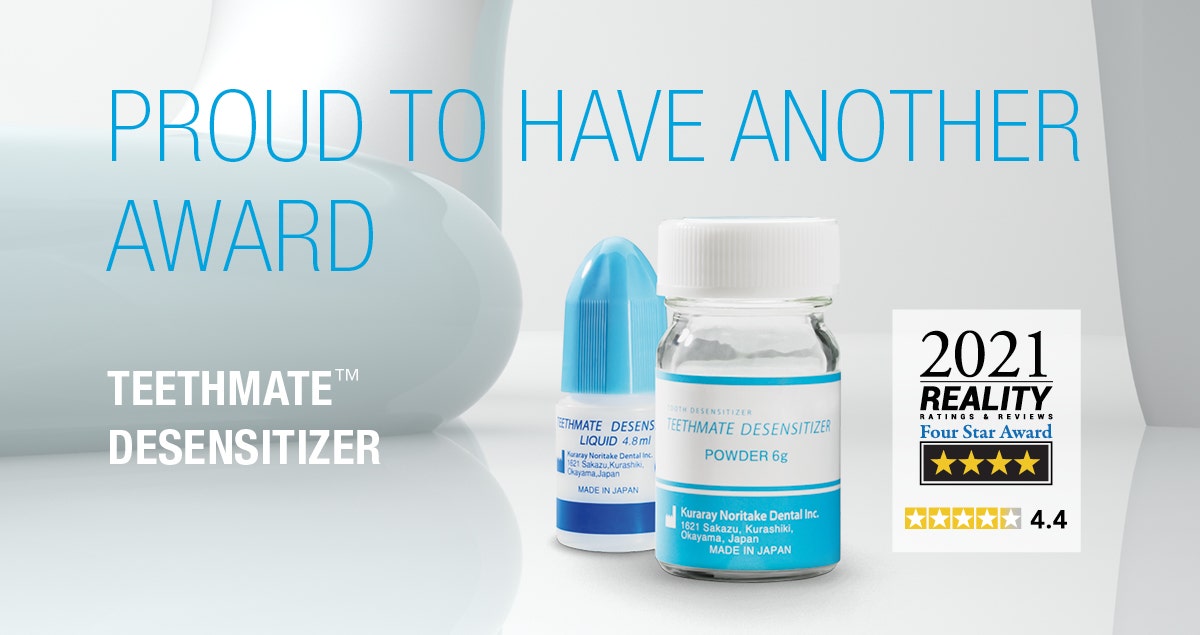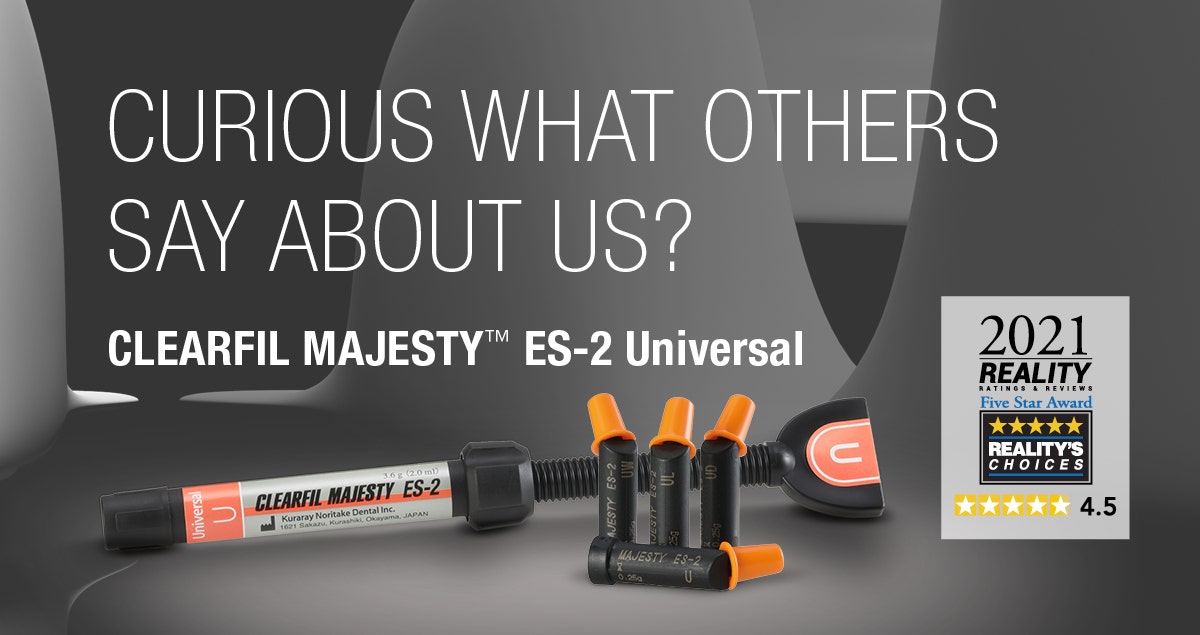Article by Dr. Stefano Daniele.
During bonding procedures for metal-free fixed dental prostheses (FDPs), try-in with specific cement shade matching glycerine paste is necessary for choosing the correct shade of resin-based cement. During try-in, however, saliva and blood could contaminate the bonding surfaces of the ceramic and dental hard tissue. It is essential for the ceramic surface and dental hard-tissue surface to be perfectly clean of bacterial biofilm and other contaminants before adhesive application. Both the procedures ensure efficient bonding and long-term reliability of the adhesive fixed prosthetic intervention.
It is essential for the ceramic surface and dental hard-tissue surface to be perfectly clean.
Cleaning the ceramic bonding surface after try-in
Try-in of metal-free fixed dental prostheses (FDPs) is a key procedure for evaluating the fit of the finishing line of the dental preparation and, for very thin veneers, for matching the resin-based cement to be used to bond the ceramic restorations to the dental hard tissue. Aesthetic features—value in particular—of thin veneers depend on different factors, and one of the most important is the choice of shade of the resin-based cement used under the thin ceramic. To make this procedure easier and repeatable, many manufacturers provide glycerine pastes that have the same colours as those of the corresponding resin-based cements. This pre-bonding procedure of try-in of metal-free FDPs enables the selection of the most appropriate resin-based cement. Glycerine pastes are generally hydrophilic and can be rinsed from the ceramic bonding surface after try-in with an air–water spray, but some contaminants, such as saliva, blood and crevicular fluid, may remain on the surface, and this may affect the efficacy of the bond to the dental hard tissue. Sandblasting contaminated surfaces of metal-free FDPs may be the best choice for removing contaminants from bonding surfaces, but it is important to consider that not all dentists have sandblasting devices in their offices. To this end, Kuraray Noritake Dental launched KATANA™ Cleaner, a specific detergent for decontaminating the bonding surfaces of ceramics that is able to provide complete removal of contaminants from the bonding surfaces of metal-free FDPs after the try-in procedure. A perfectly clean ceramic bonding surface is important for obtaining an effective micromechanical interlocking between glass-ceramic and cement, as well as for allowing the chemical bond reaction between a 10-MDP-based primer and the zirconia bonding surface.
A perfectly clean ceramic bonding surface is important for obtaining an effective micromechanical interlocking between glass-ceramic and cement.
Cleaning the dental hard-tissue bonding surface when sandblasting is not recommended
The dental hard-tissue bonding surface must be clean before bonding metal-free FDPs, and this procedures can be done by sandblasting with a ‘soft’ powder such as erythritol. The focus of this procedure would not be to create an additive retention rate for the ceramic surface, but instead to remove the bacterial biofilm from the dental hard-tissue surface before bonding. Actually, metal-free FDPs are designed to have supra gingival finishing lines. Supra gingival preparation is also important for permitting perfect isolation with a rubber dam. In clinical practice, often the finishing line may be (partly) sub gingival for specific reasons, for example in veneer preparation designed to close diastemas and cervical black triangles between anterior teeth. In those clinical cases, dental dam application may be difficult, and sandblasting dental hard tissue may pose too high a risk of periodontal tissue bleeding. Tissue bleeding near the cervical margin of the preparation before adhesive bonding procedures for metal-free FDPs may affect the seal between the restorative and preparation. These clinical situations indicate the use of cleaning agents rather than sandblasting to clean surfaces before bonding.
Limitations of conventional agents used to clean bonding surfaces
Most conventional cleaning agents are not effective cleaners of ceramic, including zirconia, surfaces of metal-free FDPs and dental hard-tissue surfaces when sandblasting is contra-indicated as described. The following is a short list of the limitations and adverse effects of the main detergents used in clinical practice before bonding procedures:
- Ethanol: It is not a very effective contaminant remover and is not able to remove saliva and blood proteins fully. Often ethanol fixates proteins rather than removing them.
- Sodium hypochlorite: It has good efficacy as a cleaner, including removal of saliva and blood proteins, but may have an adverse impact on bonding procedures owing to its oxidisation properties (free radicals released from a sodium hypochlorite reaction could result in interference with autopolymerisation and light polymerisation of resin monomers).1
- Hydrogen peroxide: It does not have any contaminantremoving properties and, to a greater extent than sodium hypochlorite, could result in interference with free-radical polymerisation of resin-based materials used for adhesive procedures.
- Chlorhexidine: It does not have any adverse effect but also no capability of removing contaminants.
KATANA™ Cleaner and its specific features
KATANA™ Cleaner is a specific detergent solution for cleaning the surfaces of all kinds of prostheses, either metal based or metal free and for the adherent surfaces of dental hard tissue. KATANA™ Cleaner is for both extra-oral and intra-oral use. The chemical composition of KATANA™ Cleaner includes 10-MDP and a 10-MDP triethanolamine (TEA)-salt in an aqueous solution. 10-MDP-TEA is an emulsifier and surfactant compound able to solubilise many substances not soluble in water and to increase the wetting capacity of those. These chemical features of 10-MDP-TEA allow easier removal of contaminants from surfaces using water spray in order to obtain a clean surface. KATANA™ Cleaner is mainly targeting proteins; saliva, blood and the like. The 10-MDP-TEA-salt is amphiphilic. The non polair part enters the contamination forming micelles. the micelles are easy to rinse of with an air-water spray.
KATANA™ Cleaner is a powerful concentrated cleaner. It has a mild pH of 4,5 thus no adverse etching of the dental hard tissue. The presence of 10-MDP in the solution makes it compatible with all dental bonding agents. KATANA™ Cleaner is a purple-coloured solution, and this feature permits easy and accurate application on all surfaces to be cleaned. An easy flow chart follows that explains the use of KATANA™ Cleaner after try-in with glycerine paste before adhesive cementation of (metal-free) FDPs.
Fig. 1. Using KATANA™ Cleaner on the bonding surfaces of metal-free fixed dental prostheses and dental hard tissue after try-in and before bonding.
Fig. 2. Ceramic partial fixed dental prostheses (veneers) before the try-in.
Fig. 3. Glycerine paste used for the try-in.
Fig. 4. Veneer try-in.
Fig. 5. Use of KATANA™ Cleaner to remove remains of try-in gel and contaminants, such as saliva, from the bonding surfaces of the fixed dental prostheses.
CLINICAL CASE 1
Cleaning of "KATANA™ Zirconia" UTML FDPs after try-in using KATANA™ Cleaner
Fig. 6. "KATANA™ Zirconia" UTML fixed dental prostheses.
Fig. 7. Cleaning the fixed dental prostheses with KATANA™ Cleaner after the try-in.
Fig. 8. Tooth preparation cleaned with KATANA™ Cleaner before adhesive application and resin cementation.
Fig. 9. Fixed dental prostheses in situ at the recall appointment.
CLINICAL CASE 2
Tooth surface cleaning using KATANA™ Cleaner
Fig. 10. Ceramic partial fixed dental prostheses (veneers) before try-in and bonding procedures.
Fig. 11. Cleaning of the dental hard-tissue bonding surfaces in a clinical situation where sandblasting was not recommended owing to the high risk of periodontal soft-tissue bleeding.
Fig. 12. Bonded partial fixed dental prostheses at the recall appointment.
Fig. 13. Perioral aspect of the veneers during smiling.
Dentist:
DR STEFANO DANIELE
Dr Stefano Daniele received his dentistry degree from the University of Milan in Italy in 2001. He is in private practice in Milan and is an academic tutor in restorative dentistry in the Department of Biomedical, Surgical and Dental Sciences at the Faculty of Medicine of the University of Milan and is located at the San Paolo hospital in Milan. He was a visiting professor at the Università degli Studi del Piemonte Orientale “Amedeo Avogadro” in Novara in Italy, teaching restorative dentistry and dental materials until 2013.
Acknowledgements
Special thanks go to master dental technician Daniele Rondoni for the fabrication of the metal-free FDPs.
Reference
1. Lai SC, Mak YF, Cheung GS, Osorio R, Toledano M, Carvalho RM, Tay FR, Pashley DH. Reversal of compromised bonding to oxidized etched dentin. J Dent Res. 2001 Oct;80(10):1919–24. doi: 10.1177/00220345010800101101.


